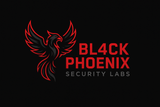Beyond the UI: Full-Disk Encryption for TerraMaster NAS

In an increasingly digital world, Network Attached Storage (NAS) devices have become central to many home and small business data strategies. They offer convenience, centralized file access, and often, rudimentary backup solutions. However, the security of the data residing on these devices is paramount. When discussing data integrity and confidentiality, full-disk encryption stands out as a critical safeguard against unauthorized access, especially in scenarios involving physical theft or data breaches.
Recently, a discovery within the Linux administration community shed light on a fascinating workaround for a common vendor limitation. The focus? TerraMaster NAS devices, specifically concerning the implementation of full-disk encryption (FDE). While many modern storage solutions offer encryption features out-of-the-box, it was observed that TerraMaster's TOS 5.x firmware did not provide this crucial capability by default, leading users to seek alternative methods.
The Discovery: Unlocking FDE via SSH on TerraMaster NAS
The core insight revealed that, despite the lack of official support in the TerraMaster Operating System (TOS) interface, it is indeed possible to implement robust full-disk encryption on these devices. The key lies in leveraging SSH access to the underlying Linux system. By utilizing tools like LUKS (Linux Unified Key Setup), users can encrypt entire disk arrays, offering a significant uplift in data security.
LUKS provides a standard for disk encryption, making it compatible across various Linux distributions and tools. It allows for advanced features like multiple key slots, key revocation, and anti-forensic measures, making it a powerful choice for protecting sensitive data.
The "Hard Way" Insight: A Tale of Two Interfaces
However, this path to enhanced security is not without its peculiarities, which prompted the original "learned the hard way" observation. The primary challenge encountered was that while a LUKS-encrypted RAID array functions perfectly at the operating system level, TerraMaster's WebUI—the graphical interface designed for easy management—remains entirely oblivious to its presence.
This means that once a drive or array is encrypted with LUKS, the TOS WebUI will not display it as a recognized storage volume. For users accustomed to managing their NAS entirely through the intuitive graphical interface, this can be a jarring experience. It effectively renders the "Storage Manager" section of the WebUI less useful for encrypted volumes, forcing administrators to revert to command-line interface (CLI) tools via SSH for mounting, checking status, and managing these encrypted partitions.
Security vs. Convenience: A Calculated Trade-off
This situation presents a classic dichotomy: the pursuit of superior security often comes at the expense of user convenience. For Bl4ckPhoenix Security Labs, this highlights a critical point in cybersecurity strategy:
- Enhanced Data Protection: Implementing LUKS encryption ensures that data at rest is protected, even if the NAS hardware is compromised or stolen. Without the correct passphrase, the data remains unreadable.
- Manual Management: The trade-off is the necessity of manual intervention via SSH for initial setup and subsequent operations like unlocking volumes after a reboot. This requires a deeper understanding of Linux system administration.
- Vendor Limitations: It also underscores the gaps in vendor-provided security features. While manufacturers aim for ease of use, critical security functionalities are sometimes overlooked or deprioritized.
For individuals and organizations where data confidentiality is paramount, and a physical security breach is a tangible threat, managing an encrypted NAS via the command line might be a small price to pay for peace of mind. The ability to encrypt an entire disk array with LUKS far outweighs the inconvenience of a non-seeing WebUI.
Recommendations for a Secured, CLI-Managed TerraMaster NAS
For those considering this path, Bl4ckPhoenix Security Labs offers the following recommendations:
- Master SSH: Familiarity with SSH and basic Linux command-line tools is essential for setup and ongoing management.
- Secure Passphrases: Use strong, unique passphrases for your LUKS volumes. Consider using key files stored securely offline for additional protection.
- Automate Carefully: While it's possible to automate LUKS unlocking at boot, this often involves storing passphrases on the device, potentially reducing security. Evaluate this trade-off based on your threat model.
- Backup Strategies: Ensure robust backup procedures are in place, considering that encrypted data recovery can be complex if passphrases or key files are lost.
- Regular Audits: Periodically verify the encryption status of your drives via the CLI to ensure everything is operating as expected.
This discovery serves as a powerful reminder of the ingenuity within the tech community to overcome limitations and enhance security beyond what is offered by default. While the TerraMaster TOS WebUI might not acknowledge the deep-seated encryption, the data itself certainly appreciates the protection.
Bl4ckPhoenix Security Labs' Perspective
At Bl4ckPhoenix Security Labs, such insights are invaluable. They highlight the ongoing tension between user convenience and robust security, and the critical role of custom solutions in bridging these gaps. It's a testament to the open-source ethos and the Linux ecosystem that users can take control of their hardware's security posture, even when official support lags. This situation not only educates users on specific device limitations but also reinforces the broader principle that proactive, informed security measures are often found outside the standard GUI.




